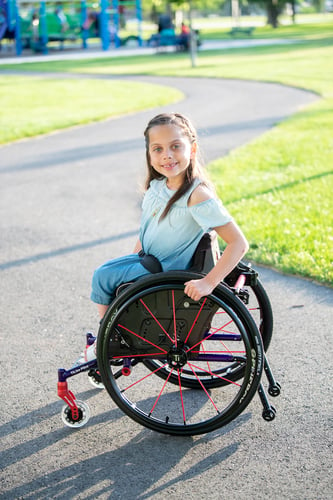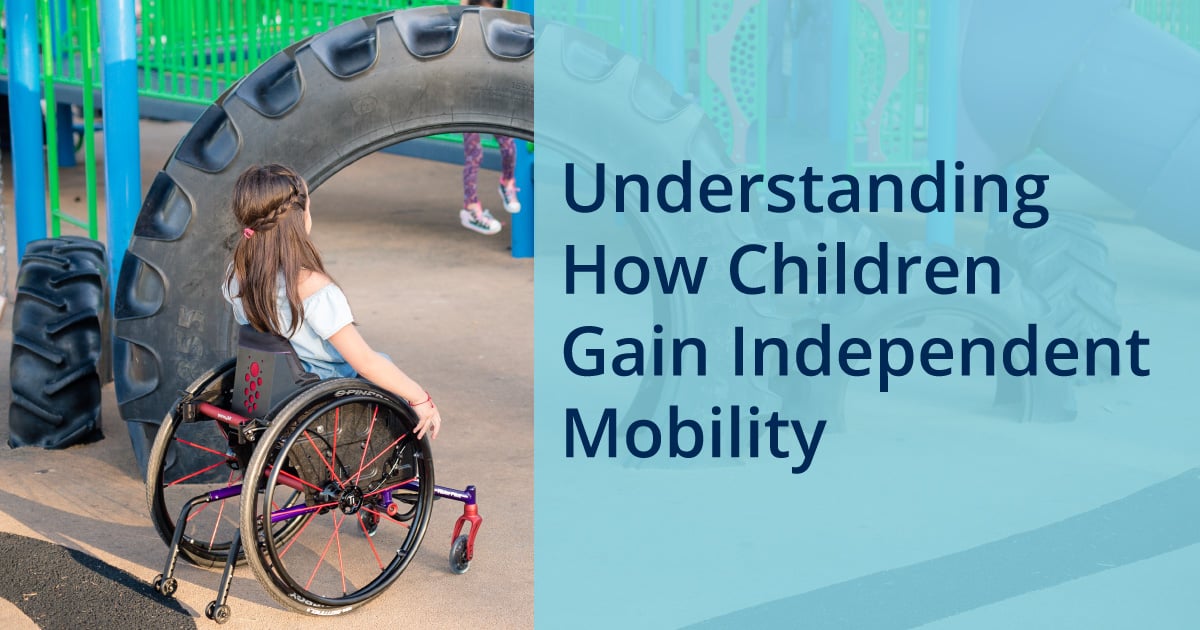Part 2 in our blog series focusing on Pediatric Mobility Solutions and the TiLite Pilot. See Part 1 here.
Last week we took a look at the several limitations in the overall design of traditional pediatric self-propelled manual mobility. From overall weight of the setup to how a short wheel base impacts stability and propulsion, these limitations can be devastating for our young clients. In order to solve these limitations, it’s important to understand how children gain independent mobility along with some of the physiology behind the importance of improving pediatric manual mobility design.
Not Just Little Adults
In general, we need to understand children are not just little adults. We can’t just take an adult size wheelchair and shrink it down and hope it works. Children have unique needs separate from the adult population. Children weigh less and have limited functional reach due to their body proportions and developmental age. At first, for example, at a very young age, our limbs are often shorter than our trunks and our head is larger in proportion to the rest of our body. Children have less strength and less range of motion. Children have more capsular tightness into shoulder flexion, so they don’t have as much shoulder extension when reaching for the wheel. Children have different neutral pelvic positions than adults based on their development and sometimes have hip and lower extremity positioning needs that have to be accommodated.
One of the differences in pediatric independent mobility, is that children are learning while they’re moving; it’s not just a matter of getting from Point A to Point B. It’s crucial the child has a great experience from the moment they get into the chair and know they can move themselves even though it may be short distances or under age appropriate supervision. Kids learn by interacting with their environments, so getting kids out to explore and learn while they are moving themselves with independent mobility is essential to their development.
We want to start a child with an optimal rear wheel position as early as possible because we don’t have enough research to fully understand the biomechanical changes that occur when a child is propelling a manual wheelchair at a very young age. In some of the most recent kinematic research the youngest child that was included in the group was 6 and a half years old; however, we know that children can start using manual mobility as young as 1 to 2 years of age, and we still don’t know the long-term impact of early propulsion.

Last of all the chair should be fun. Children can be a little timid at first when trying a new mobility device, but if the child is drawn to the chair, they want to explore and see what the chair can do. Wyatt, who uses the TiLite Pilot, said this about his chair, “My chair is so fast, my friends have to run to keep up!” We want all children to have a similar experience and opportunity to lead the pack. Getting them an ultralight chair that can be grown to their measurements while giving them wheel access from the very beginning is what is going to spark their curiosity and encourage them to have independent wheeled mobility.
References:
Bornstein, M. H., Hahn, C.-S., & Suwalsky, J. T. D. (2013). Physically developed and exploratory young infants contribute to their own long-term academic achievement. Psychological Science, 24(10), 1906–17. http://doi.org/10.1177/0956797613479974
Lobo, M. a, Harbourne, R. T., Dusing, S. C., & McCoy, S. W. (2013). Grounding early intervention: physical therapy cannot just be about motor skills anymore. Physical Therapy, 93(1), 94–103. http://doi.org/10.2522/ptj.20120158
Marr, C., Seasman, A., & Bishop, N. (2017). Managing the patient with osteogenesis imperfecta: a multidisciplinary approach. Journal of multidisciplinary healthcare, 10, 145.
Sawatzky, B. J., Slobogean, G. P., Reilly, C. W., Chambers, C. T., & Hol, A. T. (2005). Prevalence of shoulder pain in adult-versus childhood-onset wheelchair users: a pilot study. Journal of rehabilitation research and development, 42(3), 1.
Slavens, B. A., Schnorenberg, A. J., Aurit, C. M., Graf, A., Krzak, J. J., Reiners, K., ... & Harris, G. F. (2015). Evaluation of pediatric manual wheelchair mobility using advanced biomechanical methods. BioMed research international, 2015.
 Jennith Bernstein, PT, DPT, ATP/SMS
Jennith Bernstein, PT, DPT, ATP/SMS
Regional Clinical Education Manager
Jennith Bernstein received her masters in Physical Therapy at North Georgia College & State University and returned to complete her transitional DPT at University of Texas Medical Branch in 2014. While at Shepherd Center, Jennith, initiated a “Seating Champion” program to improve the inpatient and day program clinicians understanding of complex seating, pressure management and skin protection as well as research reviews, advanced programming and adjustments. She was also part of a center wide multidisciplinary focus group for reduction of hospital acquired skin breakdown. Jennith has served as a volunteer teacher at the Universidad Mariano Galvez in Guatemala, instructing spinal cord injury curriculum as well as seating and mobility. Jennith has presented at national conferences such as RESNA, ISS, and the APTA NEXT conference. Jennith has been a practicing PT for 12 years and spent the last 10 years at a model SCI center (Shepherd Center) in Atlanta, Georgia. Jennith joined Permobil as the Clinical Education Manager for the Central Region in 2016.

